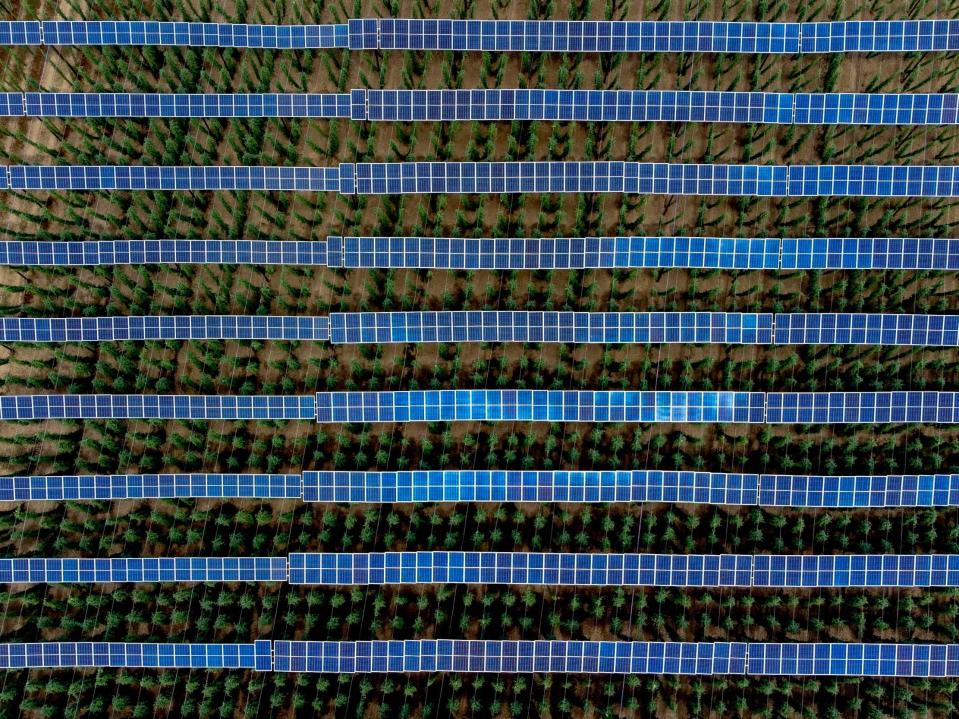Germany has too many solar panels, and it's pushed energy prices into negative territory

Germany has installed more solar capacity than consumer demand requires, SEB Research found.
During peak solar production hours, producers have taken a 87% price cut in the past 10 days.
In fact, raw market energy prices fall into negative territory during these hours.
Sunny days in Germany mean gray clouds for solar profitability as the nation's dive into renewables has left it with too much energy.
According to a note from SEB Research, in the past 10 days, solar producers have had to take an 87% price cut during production hours. In fact, when production peaks, prices have slid well below zero.
On average, the price received was 9.1 euros per megawatt-hour, significantly under the 70.6 euros paid during non-solar-power hours.
"This is what happens to power prices when the volume of unregulated power becomes equally big or bigger than demand: Prices collapse when unregulated power produces the most," the Swedish bank wrote on Tuesday.
Last year's record wave of solar installations are what's driving Germany's price "destruction" as inventory outpaces consumption. While total solar capacity topped 81.7 gigawatts by 2023's end, demand load only reached 52.2 gigawatts, noted SEB chief commodities analyst Bjarne Schieldrop.
The difference between the two actually widens even more in the summer, a season of peak production and lower demand.
This also means that consumers are not necessarily benefiting from the low prices, as they typically consume more energy in non-solar hours.
Unless new installations are spurred on by subsidies or power purchase agreements, oppressed profitability could eventually halt Germany's solar expansion, Schieldrop said.
Instead, focus is likely to move onto improvements that will make more use of the energy produced, such as investments in batteries and grid infrastructure.
"This will over time exhaust the availability of 'free power' and drive solar-hour-power-prices back up," Schieldrop wrote. "This again will then eventually open for renewed growth in solar power capacity growth."
The supply-demand imbalance is neither a new issue for Germany, nor is the country alone in experiencing it. The European market has raced to install solar capacity through last year, a move made urgent after Russia cut off its energy supplies to the continent.
A European green-energy-supply glut — further extended by wind turbine and nuclear expansions — has triggered previous instances of negative price dips.
In reality, this doesn't mean that consumers are reimbursed to use electricity, as they're not paying raw market price. Instead, rates are typically agreed on beforehand.
Read the original article on Business Insider

 Yahoo Finance
Yahoo Finance 